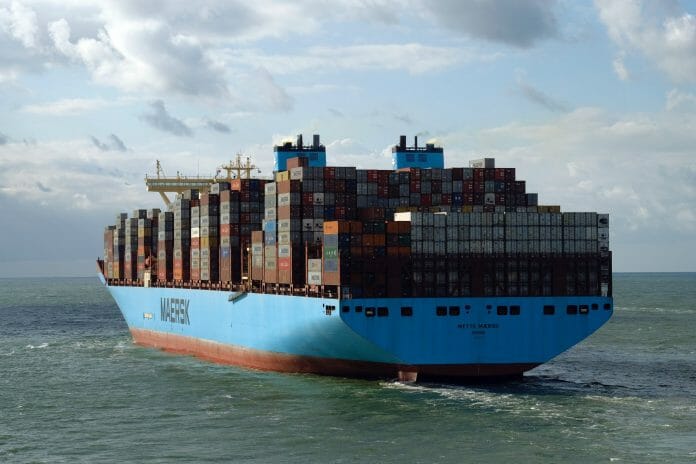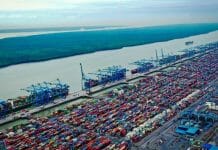Nazery Khalid looks back at a grim 2020 for the marine industry and ponders what’s in store for the marine industry in 2021
Tense present
2020 will go down in history as an annus horribilis to not only practitioners in the marine industry but also many others as the global economy was brought down to its knees and the established order turned topsy-turvy due to the Covid-19 outbreak.
The pandemic which started in China early 2020 has spread around the world and wreaked havoc to daily routines, trade, businesses and industries. As at Nov 22, this rampant virus has infected over 58 million people and claimed the lives of over 1.3 million.
High waves in the high seas
Being a key facilitator of trade, shipping sector obviously has taken a massive hit as the global economy, fuelled largely by international trade, headed towards recession amid the coronavirus outbreak. Among the notable adverse impacts of the pandemic on the shipping sector are :
- Sharp decline in the demand for shipping services in practically all trades (container, bulk, chemical, general cargo) as economies falter and global trade slumps amid demand destruction for goods, materials and services. This sent shipowners to reduce capacity of services by laying up vessels to match demand with supply, and renegotiate loan terms with their financiers. However, bucking the trend was the tanker sector which enjoyed brisk demand from oil producers who chartered them to store unused crude and refined oil.
- Steep fall in the demand for new ships transporting cargos and offshore support vessels (OSV) servicing the energy sector, port operations and various types of marine activities. This has hit shipyards around the world very hard, with many just surviving on carrying out maintenance, repair and overhaul works only as they endure thin orderbook for new vessels.
- Much inconvenience and stress to seafarers who were denied shore leave as countries introduced restrictions and even prevented them from coming onshore after signing off from voyages. This even garnered the attention of and rebuke from International Maritime Organization (IMO), the special United Nations body overseeing shipping activities including safety, security and environmental protection, and many maritime associations and labor organizations.
Action – reaction
Against this challenging background, players in the marine industry have responded by taking several actions to adjust to the altered business /operating landscape and to the new norms. Among the notable ones are :
- Shipping companies scaling back services as trade volumes and demand for shipping services declined, lockdown / movement restrictions imposed, ports suffered congestion and bottlenecks formed along supply chains. Some shipowners laid up vessels, cancelled orders of new ships (and even defaulted on shipbuilding contracts), halted expansion plans, sent old and even newly delivered ships to be scrapped / demolished and re-routed ships to optimize revenue from voyages. Energy companies also laid off offshore structures and oil rigs as they halted or scaled back exploration and production amid low demand for oil and gas.
- Ports reducing capacity utilization (some up to 50%) owing to lower cargo throughputs handled as trade volumes declined. Many port equipment such as quayside and rubber tyred gantry cranes and reach stackers are left idle as shipping calls declined and workers’ movements became restricted.
- Industry players recalibrating and strengthening their supply chains to make them more resilient to shocks and disruptions wrought by the pandemic. This includes reducing their dependency on single source / few sources of suppliers, shortening the length and reducing the complexity of their supply chains, centralizing activities along the supply chains to exert better control and reduce redundancies, and outsource non-core activities to reduce cost, among others.
Rough seas ahead
As the world continues to reel from the debilitating effects of the pandemic, players in the marine industry will be anxiously watching developments outside the industry that will have a bearing on their business, operations and strategies in 2021.
With the global and national economy expected to be in turbulence, the prospect of recovery of international trade – and by extension activities within the marine industry such as shipping, shipbuilding / ship repair, port operations and supporting services that serve trade – is dim.
In short, there is little hope that the marine industry will turn the corner if the global economy and international trade do not recover, and demand food raw materials and manufactured goods do not improve. The shipping sector will continue to be saddled with overcapacity and low freight rates owing to low demand for shipping services, and this will continue to put pressure and shipowners and continue to adversely affect other players in the marine industry.
On the financing side, the upcoming year looks set to be a challenging one for marine industry players especially those who are involved in capex-hungry activities such as shipping, port operations and offshore energy exploration and production. Lack or absence of financing looks set to hamper the growth and development of companies involved in such activities as they cannot expand or upgrade their fleet and facilities.
Of utmost concern is the fate of many small companies engaged in the marine industry which will suffer the biggest brunt of financial institutions and investors holding or scaling back financing for the industry.
As it stands, many SMEs are hanging by the thread and have even folded due to the sharp decline in the demand for their services and their inability to meet debt obligations and operational expenditures. Further financial constraints, which can be expected in the year ahead, will see more suffering and even bankruptcy amongst the smaller players in the industry.
These testy times provide an opportune moment for industry players to restructure their operations, tinkle with their strategies, consider exploring new market segments, re-brand and re-position their market posture, and review their supply chains to make them more lean, visible, robust and resilient. Smart money is on industry players to continue making adjustments to stay competitive amid the changes and new normal brought about by the pandemic.
The year ahead will see more intensive use of technologies – especially within the realm of Industry 4.0 – by marine industry players in areas such as shipping, port and shipyard operations and ancillary support services such as ship design, ship management and cargo handling / tracking. The Covid-10 pandemic has put pressure on industry players to invest in the right assets and develop capabilities to keep up with the digitalisation of the global economy. This looks set to continue as they adjust to fast-changing marketplace and consumer preferences amid the lockdown and economic downturn.
Policy makers and regulatory authorities must also work closely with industry players to eliminate unhelpful policies, rules and regulations that stifle movement of cargos along the supply chains, counterproductive to the development of trade and business, unattractive to investment and detrimental to competition in the marine industry.
The voyage ahead
Many in the marine industry will look back with relief that 2020, a year in which the industry took severe punches from the economic downturn triggered by the coronavirus, is coming to a close. They could be forgiven for thinking the worse could be over as news of the discovery of a vaccine for the deadly virus gave hope that the cure had finally arrived.
In adjusting to the changes unprecedented in modern times generated by the outbreak of the coronavirus, players in the industry will have to make quick moves and think and act out of the box innovatively. More changes could be underway should the cure for the virus is not forthcoming, and as it takes a toll on more people and causes adverse economic effects.
In response, they must re-deploy assets, inventories and human capital to seek balance with market conditions, which may get tougher in 2021, while preparing to capitalize on the eventual rebound in business activities, surge in international trade and uptick of demand for raw materials and manufactured goods.
Let us usher in 2021, the Year of the Ox, with high hopes and optimism that it will bring out the strength in us to overcome the challenges ahead and reap the opportunities emerging once the pandemic subsides.
The author welcomes feedback at [email protected]









